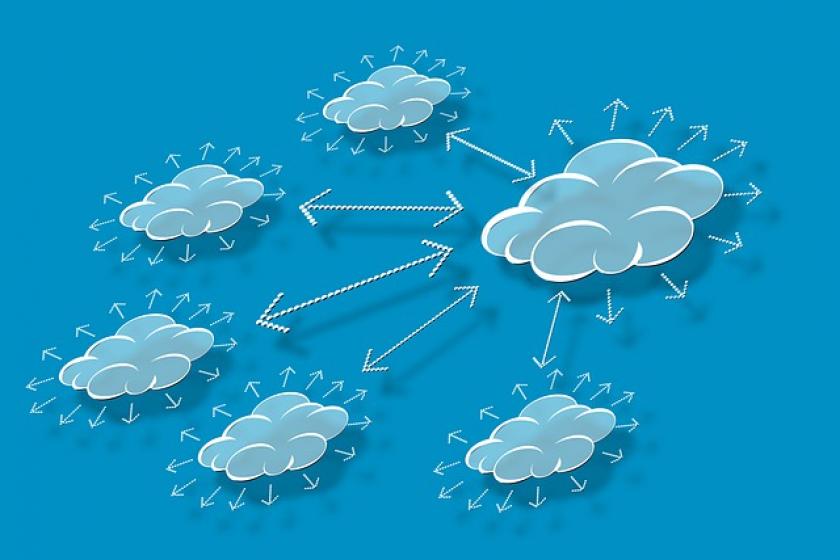In Multi-Cloud, IaaS Providers' Networking Solutions Aren't Good EnoughIn Multi-Cloud, IaaS Providers' Networking Solutions Aren't Good Enough
Nearly all the organizations in EMA's latest survey are interested in deploying an end-to-end, multi-cloud networking solution that can enable a consistent architecture across their cloud providers and their on-premises networks.
January 25, 2023

When the water dispenser on the front of your refrigerator breaks, you probably keep using the fridge itself because most of it works good enough. At some point along the way, you crack and decide a "good enough" fridge isn't okay anymore. You fix the water dispenser or maybe buy a new fridge.
In a multi-cloud network, most enterprises find that "good enough" no longer applies to the native networking solutions that their IaaS providers offer. While native offerings from their providers are the most popular network tools in a multi-cloud environment, more than half of IT pros recently surveyed by EMA are on the verge of "cracking" with them. They are somewhat satisfied with these services but know they could do better. EMA expects they will eventually need a multi-cloud networking solution to replace or optimize these cloud providers' network services.
While most enterprises rely heavily on the native networking features and services cloud providers offer, only 24% are delighted with these solutions. The rest see room for improvement.
These findings are from EMA's new research report, "Multi-Cloud Networking: Connecting and Securing the Future."
Native networking features and services from cloud providers are increasingly becoming just like the refrigerator with the broken water dispenser. It does the job often, but a working water dispenser would be more efficient.
EMA asked survey respondents to identify their top challenges with these solutions in multi-cloud networks. Bandwidth issues, cost management, lack of advanced networking features, insufficient security capabilities, and concern about provider lock-in were top of mind.
See also: Embrace Multi-Cloud Complexity to gain Competitive Advantage
Bandwidth issues
Network teams struggle to keep up with bandwidth demand as more applications migrate to the cloud – and that move isn't over. EMA's latest research found that most enterprises plan to continue their cloud migration by moving more applications to the cloud during the next two years and increasing the number of cloud providers they use.
Cloud provider tools can't handle as much throughput as a third-party vendor's software. For instance, some cloud providers offer limited bandwidth with their VPN solutions. Take that problem today and add the prospect of a deeper and broader cloud environment; you can see why this is an area of concern. Interestingly, organizations that self-identified as unsuccessful with their multi-cloud networks struggled most with bandwidth limitations.
Cost management
Cost can be an issue when enterprises rely heavily on native network offerings from cloud providers. For instance, many cloud providers offer pay-as-you-go pricing, which can pile up over time. Third-party networking solutions, on the other hand, will provide subscription licensing that is easier to manage.
Lack of advanced networking features
Many cloud providers introduce first-generation networking solutions that lack advanced features. Over time, they add those features, but networking teams tasked with building multi-cloud networks can't wait that long. For instance, they need BGP routing support across their cloud providers, and not all providers offer it.
Concern about provider lock-in
Inconsistent management and features from different providers left some survey respondents stuck with a sense of provider lock-in. It is a pain point we heard about in interviews with networking pros. They find the inconsistency of advanced features across different providers a challenge. Moving from one provider to another is hard when each environment has proprietary networking features.
Insufficient security capabilities
Everyone is always worried about security. There's no exception regarding the native networking tools from cloud providers. Cloud providers are not security specialists. Enterprises will always seek a third-party vendor to keep up with the ever-evolving threat landscape.
However, cybersecurity professionals in this survey were less likely to worry about the security capabilities of the native networking solutions from cloud providers compared to those in the CIO suite, suggesting that this issue might not be as dire as the research suggests.
EMA's point of view
Enterprises commonly begin their cloud networking journey using a native networking solution that their cloud providers offer, such as VPC subnetting tools, load-balancing functions, and routing services.
These solutions are typically proprietary to a specific cloud provider, which can add complexity as organizations add additional providers to a network. Nearly all the organizations in EMA's latest survey are interested in deploying an end-to-end, multi-cloud networking solution that can enable a consistent architecture across their cloud providers and their on-premises networks.
As you go down the multi-cloud road, you may find it impossible to rely on the native networking solutions of your cloud providers. EMA research found that the most successful operators of multi-cloud networks are moving away from these cloud provider offerings in favor of end-to-end multi-cloud networking solutions.
Robert Gates is Senior Analyst, Network Infrastructure and Operations at EMA.
About the Author
You May Also Like


